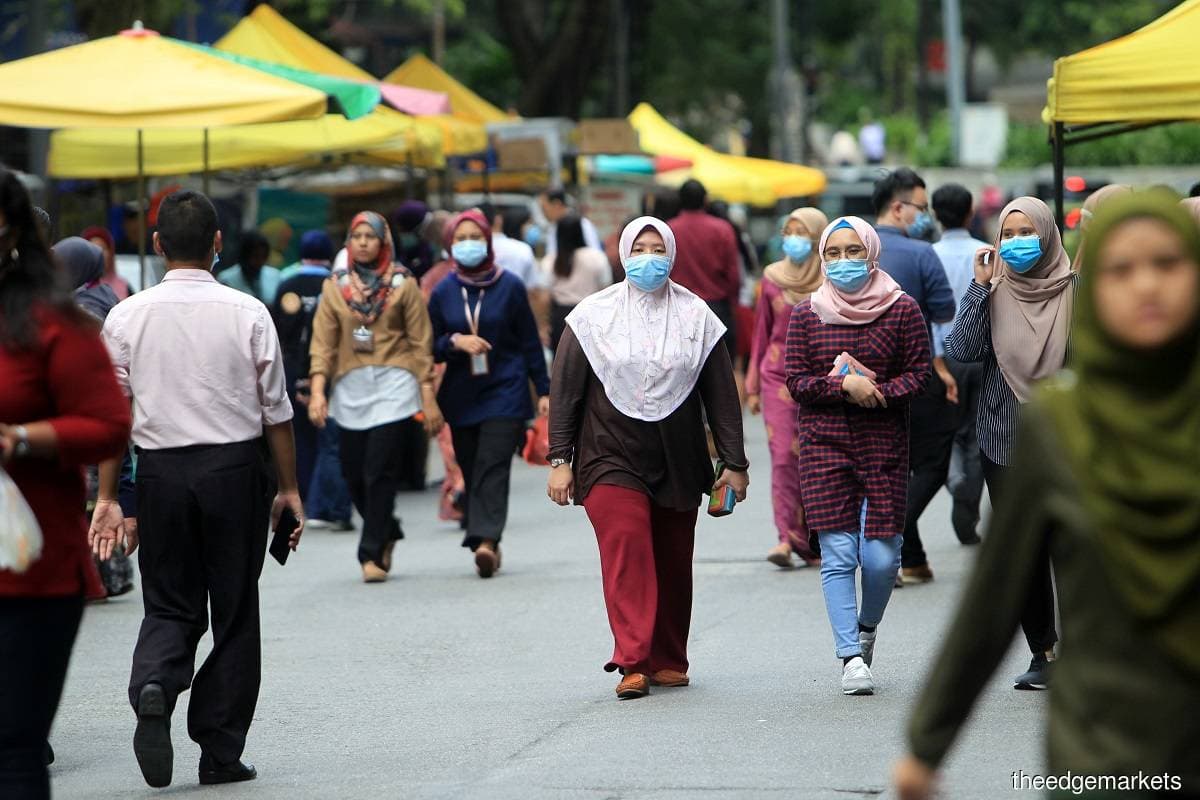
KUALA LUMPUR (July 14): Malaysia's unemployment rate of 5.3% in May — up 0.3% from 5% in April — is in line with economists' expectations, taking into account the government's Movement Control Order (MCO) and economic stimulus packages.
Associate Prof Dr Irwan Shah Zainal Abidin of Universiti Utara Malaysia (UUM) said the unemployment rate could have risen higher without the government's short-term economic recovery plan and related initiatives such as the Prihatin stimulus package.
"This is expected as the short-term economic packages were meant to avoid the worst-case scenario. Therefore, the figure is far from the worst-case number of 2.4 million unemployed persons," said Irwan Shah, who is also the deputy director of UUM's Economic and Financial Policy Institute.
According to the Department of Statistics Malaysia, the number of unemployed persons in May rose by 47,300 to 826,100. The department said the monthly change of unemployed persons in May was very much lower than the change registered from March to April of 168,300 people.
Despite this, Irwan Shah said it is imperative that the government devises medium- and long-term economic plans given that the current unemployment rate could be a result of structural issues from the long-term perspective.
"Hence, looking for new sources of growth is critical moving forward, as well as reforming the education system. My main concern is not so much about people being unemployed, but them being unemployable," he told theedgemarkets.com.
Bank Islam Malaysia Bhd chief economist Dr Afzanizam Abdul Rashid described the rise in May unemployment rate as inevitable citing restrictive economic activities under the Conditional Movement Control Order (CMCO) when interstate travel was still banned.
This, he said, largely impacted workers who provide services in sectors such as tourism, event management, sports and recreation, and construction.
"The rise in unemployment rate was pretty much expected. The CMCO commenced on May 4 but interstate travel continued to be banned. Thus, economic activities were still restrictive, limiting the extent of job creations," he said.
Going forward, Afzanizam said Malaysia's unemployment could stabilise in June as employers might have started to rehire their workers.
However, he said the unemployment rate would likely remain at elevated levels of around 5%. This is in view of the implementation of the Recovery Movement Control Order in June, which should see more lively economic activities.
"The latest out-turn in Malaysia's Purchasing Managers' Index to above 50-point demarcation line should attest the notion of gradual recovery," he said.
"Further improvement in the jobless rate is contingent upon the reopening of the economy. Should Covid-19 infections remain under control, the reopening of the economy should proceed as more jobs would be demanded by employers.
"The sequential gain in the IPI (Industrial Production Index) by 18.2% month-on-month (m-o-m) as well as 19.2% m-o-m gain in manufacturing sales during May 2020 suggest that unemployment rate could be on a lower trajectory in the second half of 2020," he added.
Sunway University economics professor Dr Yeah Kim Leng said the rise in May's unemployment rate to 5.3% is less ominous than feared following April's spike from pre-Covid-19 three-year average of 3.3%.
He said this is because the labour market impact has been lessened by the four economic stimulus packages that include wage subsidies and various financial relief for employers.
Nonetheless, he said the figure is expected to inch further upwards due to further job losses and lower job creations than the number of new working-age individuals entering the job market.
"Another uptick in the jobless rate could materialise upon the expiry of the relief measures and if business volume in the severely affected industries such as aviation and travel, hotel and restaurant, and tourist-dependent retail and hospitality outlets remain sluggish.
"As long as the recovery continues without a resurgence of virus infections that necessitate widespread movement restrictions, the rising unemployment trend is expected to stabilise at the single-digit level and taper off as the recovery pace quickens next year," he added.
In its economic review report released today, MIDF Research said the higher unemployment in May reflected continued weakness in the job market with businesses adjusting to the new normal, and restarting operations after the MCO.
The firm noted that job vacancies per month based on the latest available data in April were recorded at only 4,100 — the lowest level since March 2005.
MIDF maintains its forecast for the unemployment rate at 4% for the year, saying the number of unemployed persons may remain high at the current level over the next few months.
"Some companies may have to resort to retrenching its employees to manage operating costs. With activities in the economy gradually restarting and normalising, measures taken by the government through stimulus packages will support employment to be more stable in the second half," it added.
